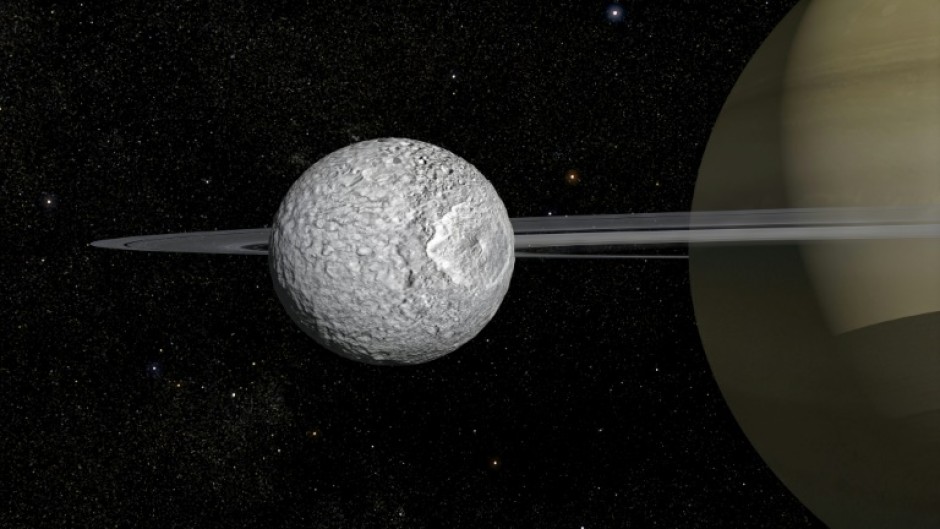WASHINGTON - Saturn's small moon Mimas seems an unlikely suspect in the hunt for life in Earth's backyard -- it is probably best known for looking like the "Death Star" in the Star Wars films.
But scientists said that underneath the unassuming moon's icy shell is a vast hidden ocean that has many of the ingredients necessary to host primitive alien life.
Mimas is the latest to join a growing family of icy moons thought to harbour inner oceans in our Solar System which also includes fellow Saturn satellites Enceladus and Titan as well as Jupiter's Europa and Ganymede.
But the inclusion of Mimas in this list has come as a surprise.
"If there is one place in the universe where we did not expect to find conditions favourable to life, it is Mimas," said Paris Observatory astronomer Valery Lainey, the lead author of a new study in the journal Nature.
Mimas, which is only 400 kilometres in diameter, was "not at all suitable for the job", Lainey told a press conference.
Discovered by English astronomer William Herschel in 1789, the moon has the nickname "Death Star" because one particularly huge crater makes it look eerily similar to the space station used by Darth Vader and the villainous Empire in Star Wars.
Its craggy, crater-riddled surface is inert, showing no sign of underlying geologic activity that would suggest a hidden ocean.
Other water worlds such as Mimas' big sibling Enceladus have smooth surfaces due to their rumbling internal oceans and many geysers.
These geysers, which shoot out material from the surface, also demonstrate that there is enough heat below to keep the water in a liquid state.
Despite its seemingly desolate exterior, Lainey said the researchers suspected that "something was happening inside" Mimas.
They studied how the moon's rotation is affected by its interior structure, first publishing research in 2014 which was not strong enough to prove the presence of a hidden ocean.
Most scientists remained convinced by the other main hypothesis: that Mimas has a solid core of rock.
"We could have left it there," Lainey said, adding that they were "frustrated".

